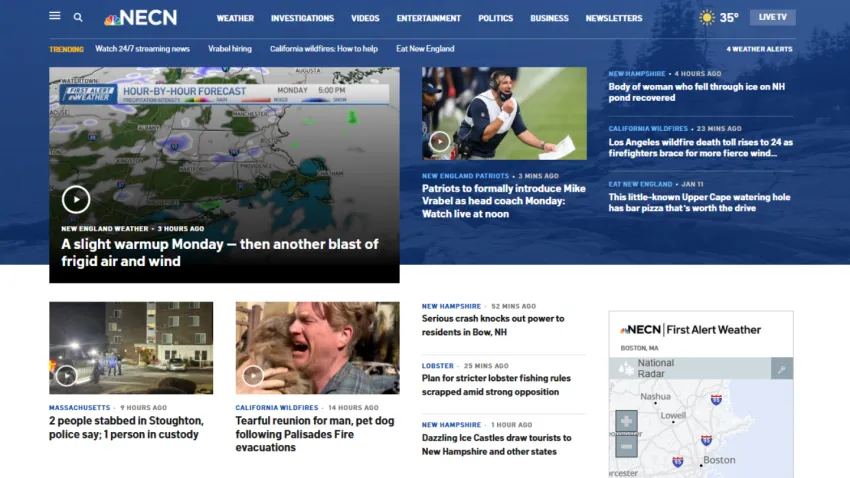

The Latest
-

Why you shouldn't panic about Triston Casas' slow start
Triston Casas has had a woeful start to the 2025 season, but it isn’t time to worry about the Red Sox first baseman just yet.
-

Have Patriots received trade calls about No. 4 pick in draft?
Patriots head coach Mike Vrabel discusses different trade scenarios ahead of the 2025 NFL Draft.
-

A look back at when Scottie Pippen was almost a Celtic
Michael Holley revisits Rick Pitino and the Celtics attempting to trade for Bulls superstar Scottie Pippen after missing out on the No. 1 pick in the 1997 NBA Draft.
-

Vrabel sheds light on Patriots' player grading system, No. 4 pick strategy
Mike Vrabel provided interesting insight into how the Patriots grade players and their approach to using the No. 4 pick in the 2025 NFL Draft.
-

Hog Island Beer Company is acquiring Mayflower Brewing Company
[This story first appeared on Boston Restaurant Talk.] A Cape Cod brewery is in the process of purchasing a beermaker on the South Shore. According to a source, Hog Island Beer Company in Orleans is acquiring Plymouth’s Mayflower Brewing Company, with a press release shared by Mass. Brew Bros. saying the following: This exciting move marks a ... -

DA says Auburn police officer was one of 10 arrested in child predator sting
New details were released Tuesday about an Auburn, Massachusetts, police officer arrested as part of a child predator sting.
-

Video shows gas masked man's pepper spray attack at Woburn courthouse
New video shows the moments a man in a gas mask walks up to a courthouse in Woburn, Massachusetts, and force his way inside while pepper-spraying officers on Monday.
-

Amazon headcount surges in Massachusetts after years-long lull
Amazon headcount surges in Mass. after years-long lull
-

Holiday reacts to Brown's knee injury: ‘Nobody's worried about him'
Jaylen Brown took part in Tuesday’s practice as the Celtics prepare for the playoffs, and his teammates thought he looked “great”.
-

Chance for showers, isolated thunderstorms Tuesday, weekend temps could reach 70s
Stay alert! We’re tracking the chance for showers and isolated storms on Tuesday but sunny, cooler weather is in sight. As we continue moving through this Tuesday, keep your rain gear handy. A few showers and isolated thunderstorms are possible as a cold front moves through the region. Some pockets of heavy rain are possible. While the threat for ... -

Federal judge drops contempt case against ICE agent over mid-trial Boston arrest
A federal judge has dismissed a contempt case against an agent for ICE whose arrest of a man during his trial sparked criticism among the law enforcement community in Boston.
-

See the full list of Massachusetts 250th events being held this week
The events include a reenactment of Paul Revere’s ride in Boston on Friday, and reenactments of the Battles of Lexington and Concord this weekend Dozens of events are planned in Boston, Lexington, Concord and other Massachusetts communities this week as part of the 250th anniversary of the first battles of the American Revolution. The Healey-... -

‘It's in my roots': Lexington native Rachel Dratch on how Mass. inspires her work
“Saturday Night Live” favorite Rachel Dratch is returning home to Lexington, Massachusetts, to celebrate the 250th anniversary of the American Revolution. Dratch played one of the most memorable characters on SNL. At the time, she had no idea that “Debbie Downer,” an idea she thought of while on a vacation, would become so i...









